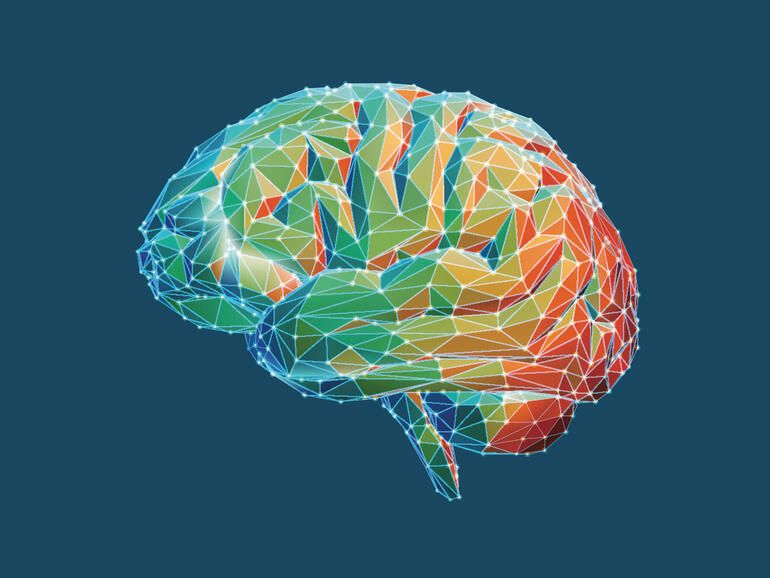In recent years, artificial intelligence (AI) has become an integral part of healthcare, offering promising tools to improve diagnostic accuracy and treatment personalization. Among these innovations, AI-driven depression screening tools have garnered significant attention for their potential to identify at-risk individuals early and connect them to appropriate care. However, a new study has uncovered troubling evidence of systematic bias embedded within these AI models. This article delves into the findings of that study, explores the root causes of AI bias in depression screening, examines the wide-ranging consequences, and offers concrete recommendations to address and mitigate these issues.
AI-based depression screening tools typically analyze data such as patient self-reports, electronic health records (EHRs), speech patterns, facial expressions, and social media activity. By leveraging machine learning algorithms particularly classification models these systems aim to detect symptoms of depression more quickly and accurately than traditional methods. Proponents argue that AI screening can:
A. Increase Access
By automating preliminary assessments, AI tools can be deployed in remote or underserved areas, expanding mental health screening reach.
B. Enhance Efficiency
Clinicians can receive rapid, data-driven insights, freeing up time for direct patient care.
C. Standardize Assessments
Algorithms apply consistent criteria uniformly, potentially reducing variability across human evaluators.
Despite these advantages, the same study that praised AI’s potential also revealed a darker side: algorithmic decisions that disproportionately misclassify or overlook certain demographic groups.
Key Findings of the Study
The recent peer-reviewed investigation analyzed three widely used AI depression screening platforms, comparing algorithmic outputs against clinician-administered diagnostic interviews across a diverse sample of 2,500 adults. The study’s primary revelations include:
A. Higher False Negatives for Minority Groups
The AI tools failed to detect depressive symptoms in Black and Hispanic participants at a rate 30–40% higher than in white participants.
B. Overdiagnosis in Young Adults
Individuals aged 18–25 experienced a 25% greater false-positive rate compared to those over 50, potentially leading to unnecessary treatment.
C. Gender Imbalance in Accuracy
Models were more accurate for women than men by approximately 15%, indicating that symptom presentation differences across genders were not fully captured.
D. Language and Cultural Bias
Non-native English speakers had their self-reported symptom severity downgraded, leading to underestimation of their depressive states.
These disparities highlight that AI screening is not neutral; it inherits and amplifies biases present in its training data and development process.
Root Causes of Algorithmic Bias
Understanding why bias arises in AI depression screening requires examining each stage of model creation:
1. Data Collection and Labeling
A. Underrepresentation
Many training datasets overrepresent certain demographics often white, English-speaking, urban populations—while underrepresenting minority groups, rural residents, and non-English speakers.
B. Subjective Labeling
Human annotators provide “ground truth” depression labels based on clinical notes or interviews. Annotator biases can skew these labels if cultural expression of symptoms is misinterpreted.
2. Feature Selection and Engineering
A. Inappropriate Proxies
Algorithms may rely on proxies such as word choice frequency in speech or social media posts—that correlate differently with depression across cultures.
B. Neglected Symptom Variability
Engineers might omit features critical to certain groups, like somatic pain complaints common in some cultures, focusing instead on Western-centric emotional descriptors.
3. Model Training and Optimization
A. Objective Function Limitations
Standard accuracy maximization does not penalize disparate impact. Models optimized solely for overall performance may sacrifice fairness.
B. Lack of Fairness Constraints
Without explicit fairness metrics during training such as equalized odds or demographic parity models can inadvertently produce unequal error rates.
4. Deployment and Feedback Loops
A. Clinical Workflow Integration
If AI outputs are uncritically accepted by clinicians, biases go unchallenged, reinforcing skewed decision patterns.
B. Feedback Amplification
New data collected post-deployment may mirror initial biases, perpetuating a cycle of biased learning.
Consequences of Biased Screening
The repercussions of AI bias in depression screening extend beyond technical errors, affecting individuals, healthcare providers, and society at large:
Individual Impact
A. Missed Diagnoses
Minority patients who are underdiagnosed may go without treatment, worsening their mental health and increasing risk of crisis.
B. Unnecessary Treatment
Overdiagnosis in certain groups can lead to unwarranted medication prescriptions, exposing patients to side effects and stigmatization.
C. Erosion of Trust
Repeated misclassifications can undermine confidence in digital health tools and mental health services more generally.
Clinical and Systemic Impact
A. Resource Misallocation
Misguided referrals strain mental health resources, pulling attention away from genuinely at-risk individuals.
B. Legal and Ethical Liability
Healthcare providers and AI vendors may face legal repercussions if bias leads to demonstrable harm.
C. Regulatory Scrutiny
Persistent bias issues could prompt stricter regulations, potentially slowing innovation and increasing compliance costs.
Societal Impact
A. Health Disparities
AI bias risks widening existing mental health disparities among socioeconomic and ethnic groups.
B. Public Perception
Negative media coverage of biased AI may fuel broader skepticism toward digital health technologies.
Strategies to Mitigate AI Bias
Addressing bias in AI depression screening demands a multi-pronged approach across the AI lifecycle:
A. Diversify and Enrich Training Data
-
Representative Sampling
Ensure datasets include balanced representation across age, gender, ethnicity, language, and geography. -
Culturally Informed Labeling
Engage annotators from diverse backgrounds and train them on cross-cultural symptom expression.
B. Incorporate Fairness in Model Design
-
Fairness-Aware Learning
Use algorithms that include fairness constraints (e.g., adversarial debiasing, reweighting) to equalize error rates. -
Multiple Objective Optimization
Balance accuracy with fairness metrics, such as demographic parity or equal opportunity.
C. Rigorous Validation and Auditing
-
Subgroup Performance Evaluation
Report model performance separately for each demographic group during validation. -
Independent Audits
Commission external audits by ethics boards or regulatory bodies to review algorithmic fairness.
D. Transparent Reporting and Accountability
-
Model Cards
Publish detailed documentation outlining model purpose, training data composition, performance metrics, and known limitations. -
Stakeholder Engagement
Involve patients, clinicians, and ethicists in the development and deployment process to surface concerns early.
E. Post-Deployment Monitoring
-
Continuous Feedback Loops
Collect real-world performance data, track disparities, and retrain models periodically to correct drift. -
Human-in-the-Loop
Maintain clinician oversight on AI recommendations, providing the option to override algorithmic outputs.
Implementing Best Practices: A Step-by-Step Guide
Healthcare organizations and AI developers seeking to build fair depression screening tools can follow this roadmap:
A. Planning Phase
-
Define fairness goals aligned with organizational values.
-
Assemble a multidisciplinary team including data scientists, clinicians, and ethicists.
B. Data Phase
-
Audit existing data for demographic gaps.
-
Source or collect supplementary data to fill representation voids.
C. Development Phase
-
Choose model architectures that support fairness constraints.
-
Embed bias mitigation techniques from the outset (e.g., preprocessing, in-processing, post-processing).
D. Validation Phase
-
Conduct stratified performance testing.
-
Document all findings in an accessible model card.
E. Deployment Phase
-
Train clinicians on interpreting AI outputs and recognizing potential bias.
-
Establish clear protocols for human review of AI-driven flags.
F. Monitoring Phase
-
Schedule periodic reviews of model performance metrics by subgroup.
-
Override or retrain models when disparities exceed predefined thresholds.
The Role of Regulation and Ethics
Ensuring equitable AI in mental health also requires external oversight:
A. Regulatory Frameworks
Governments and agencies—such as the FDA in the United States or the European Commission—should require bias impact assessments as part of AI medical device approval processes.
B. Ethical Standards
Professional bodies (e.g., American Psychiatric Association, World Psychiatric Association) can develop guidelines for ethical AI deployment, emphasizing cultural competence and patient rights.
C. Legal Recourse
Clear legal pathways should exist for individuals to challenge AI-driven decisions that cause harm.
Looking Ahead: The Future of Fair AI in Mental Health
The growing reliance on AI for mental health screening underscores the urgency of building equitable systems. Promising research areas include:
A. Multimodal Models
Integrating text, audio, and physiological data to capture a fuller spectrum of depressive symptoms across diverse populations.
B. Federated Learning
Training models on decentralized data from multiple institutions to improve representation without compromising patient privacy.
C. Explainable AI (XAI)
Developing interpretable models that allow clinicians and patients to understand the rationale behind screening decisions.
D. Community-Driven Data Collection
Partnering with community organizations to curate datasets that reflect real-world diversity and lived experiences.
Conclusion
AI-powered depression screening holds transformative potential for early intervention and better mental health outcomes. Yet, as the recent study starkly reveals, unchecked bias in these systems can exacerbate disparities, misdirect care, and erode trust. By recognizing the multifaceted nature of algorithmic bias—from data collection to deployment stakeholders can implement robust safeguards, foster transparency, and prioritize fairness on par with accuracy. Only through such concerted efforts can AI fulfill its promise of equitable, accessible mental health screening for all.










